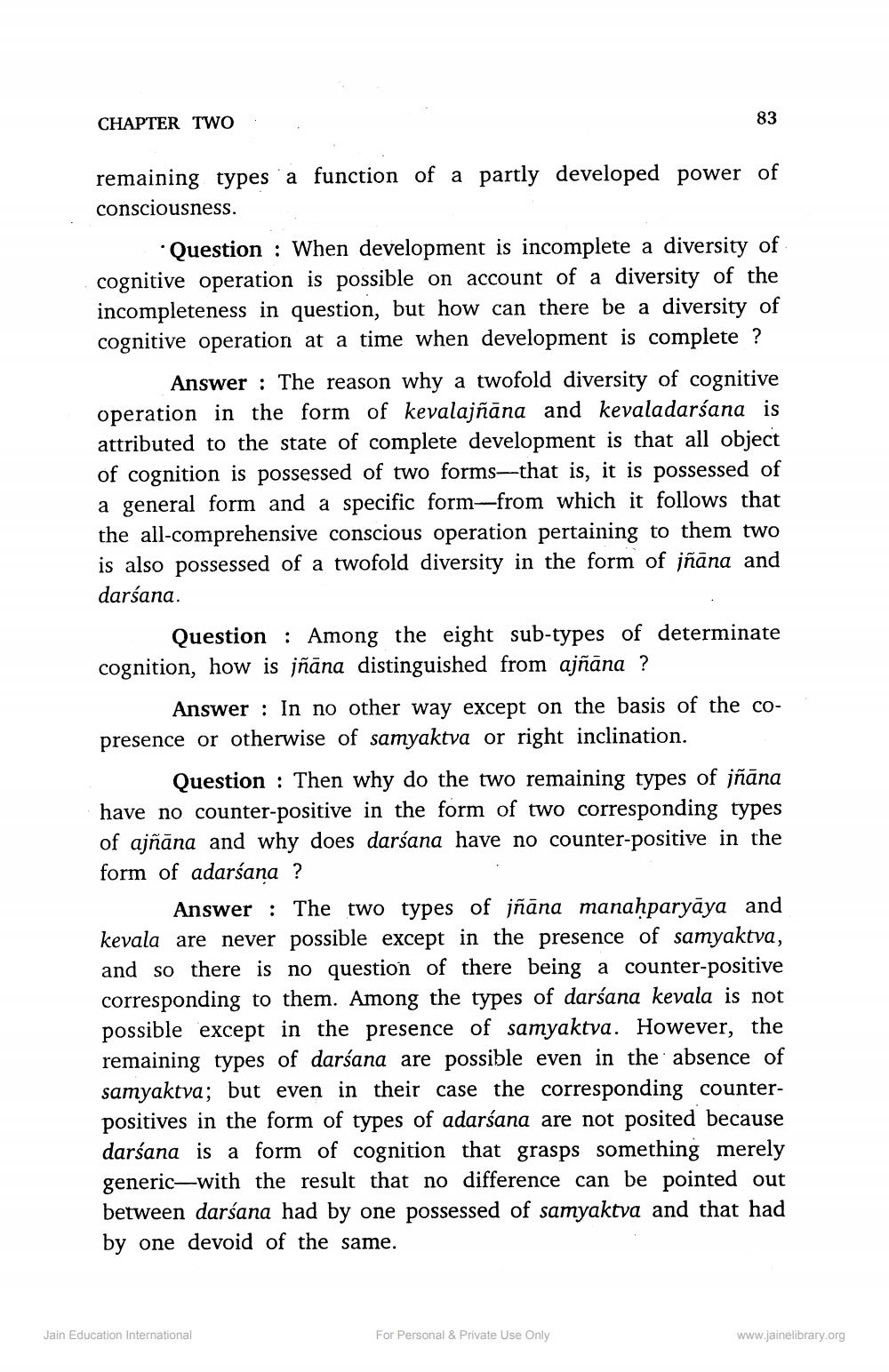________________
CHAPTER TWO
remaining types a function of a partly developed power consciousness.
888
83
Question: When development is incomplete a diversity of cognitive operation is possible on account of a diversity of the incompleteness in question, but how can there be a diversity of cognitive operation at a time when development is complete ?
of
Answer: The reason why a twofold diversity of cognitive operation in the form of kevalajñāna and kevaladarśana is attributed to the state of complete development is that all object of cognition is possessed of two forms-that is, it is possessed of a general form and a specific form-from which it follows that the all-comprehensive conscious operation pertaining to them two is also possessed of a twofold diversity in the form of jñāna and darśana.
Question: Among the eight sub-types of determinate cognition, how is jñāna distinguished from ajñāna ?
Answer In no other way except on the basis of the copresence or otherwise of samyaktva or right inclination.
Jain Education International
Question: Then why do the two remaining types of jñāna have no counter-positive in the form of two corresponding types of ajñāna and why does darśana have no counter-positive in the form of adarsana ?
For Personal & Private Use Only
Answer: The two types of jñāna manaḥparyāya and kevala are never possible except in the presence of samyaktva, and so there is no question of there being a counter-positive corresponding to them. Among the types of darśana kevala is not possible except in the presence of samyaktva. However, the remaining types of darśana are possible even in the absence of samyaktva; but even in their case the corresponding counterpositives in the form of types of adarśana are not posited because darśana is a form of cognition that grasps something merely generic-with the result that no difference can be pointed out between darśana had by one possessed of samyaktva and that had by one devoid of the same.
www.jainelibrary.org




